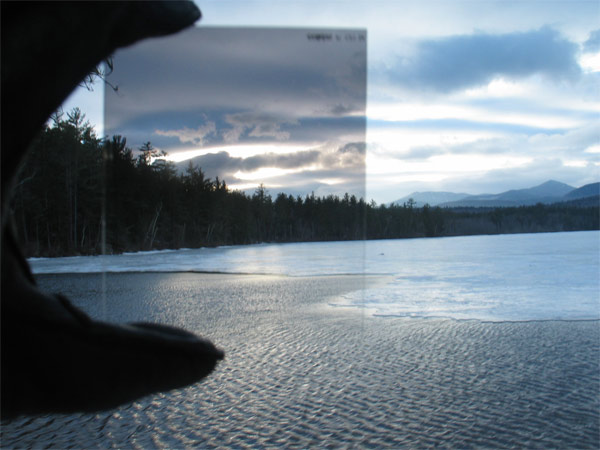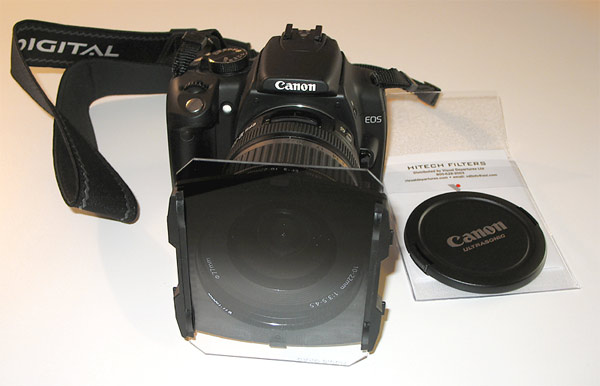What is a filter? How to use Filter in photography?
If you are a photographer, it may not be strange to hear the term Filter. Filter also known as camera glass filter. With Filter, we can use for many different purposes to serve the photography process. So why use Filter and use them under any circumstances.
1. Use Filter in photography:
When taking photos, your camera is like your eyes. When it's too bright, you'll need a pair of sunglasses to protect your eyes. Similarly, when you take photos, you also need a support filter to protect your eyes. When shooting landscapes during the day, due to limited dynamic range, it would be difficult for the machine to obtain the information of the two regions and the sky with too large light differences. A filter is a great tool for you to easily take photos without the help of Photoshop.

However, filters can damage images if they are not used properly. For example, you wear sunglasses in a dark room. Therefore, you need to know the effect of each type of filter and have a choice in each situation. There are different types of filters, from cheap UV filters to filters that cost a few hundred dollars.
2. What types of filters are there and how to use them?
There are 9 types of filters : UV, Polarized, ND, GND, Reverse Graduated, Color, Close up and types of filters to create effects. Each filter type has a different specific use and proper usage. There are types made from high quality glass, polycarbonate or polyester.
UV or Haze Filter is used to protect your front lens from dirt, scratch or moisture. They are all made of clear glass, many photographers always use for their lenses.

Polarizing filters work to increase contrast or color while helping to avoid light reflection. When using polarizing filters, the sky will be greener depending on the level when you rotate the filter to create an effect. Normally polarizing filters will reduce light by 2 steps.
ND filter helps reduce the amount of light entering the sensor for longer exposure than usual. This is extremely useful when you want to smooth waterfalls, sea surfaces or capture moving clouds in the sky.

Similar to ND Filter, GND filter is divided into 2 parts, a darker part and a brighter part for you to capture scenes with large difference in brightness such as sky and ground but still get full details only with a picture.
Next is the Reveser GND filter. This is the same type of filter as GND but at the bottom edge is almost part of the clear glass, the middle part is a bit darker and the upper part is completely dark. This type of filter is often used when you shoot the sky with high light intensity. You can catch it at sea at dusk or very well used sunrise.

The close up filter works to allow you to focus closer to the ioongs of macro lenses. However, the quality will definitely not be equal.
Filters create effects such as star-shaped bokeh, hearts, and light trails that can be used to make the photo more interesting.
3. How to use Filter?
You can use independent filters but you can also combine multiple filters at the same time. There is an accessory that helps you combine the filters together. When needed, you can pair 3 ND, GND and other filters if needed.
When you first buy a filter, you'll probably want to buy a poor quality filter, which is a waste of your time and money. Poor quality filters will make your image quality significantly reduced. So make a reasonable investment.

The filters you use will depend on how many bright steps you need to reduce, or which areas to light up or which areas to lighten. To be sure, you should switch to take photos in RAW format and try taking a few shots when there is no filter and see histogram chart to choose accordingly. Many people always use their filters, which is not wrong, but it makes you much more time consuming.
When taking a waterfall, always carry the GND filter, because just exposing it for longer than 1 second, you can see that the image is completely different.
Refer to the following articles:
- The meaning of the symbol on the camera lens you need to know
-
9 basic rules of composition in photography
- 10 simple photography techniques for impressive photos
Hope this article is useful to you!
You should read it
- Photoshop CS: Eclipse effect
- Learn about blue light filters
- Tips to clean the hood quickly and simply at home
- What is a UF filter? Compare UF, RO and Nano water filtration technologies
- What are the functions of HEPA filter on air purifiers?
- Filter () function in Python
- Compare filters of vacuum cleaners
- Guide to Automatic Filter and Filter detailed data in excel
May be interested
- What is a UF filter? Compare UF, RO and Nano water filtration technologies
 the article of tipsmake.com will help you understand what uf filter is and what uf water filtration technology has advantages and disadvantages compared to ro and nano.
the article of tipsmake.com will help you understand what uf filter is and what uf water filtration technology has advantages and disadvantages compared to ro and nano. - 5 most popular photography trends you need to know
 if you are a professional photographer, a creator who likes to learn about photography art or a designer who often uses copyrighted images in creative products, do not ignore this article.
if you are a professional photographer, a creator who likes to learn about photography art or a designer who often uses copyrighted images in creative products, do not ignore this article. - What are the functions of HEPA filter on air purifiers?
 on an air purifier there is an extremely important part, which is the hepa filter. what is this filter? how does the product function? to get the answer, please refer to our following article!
on an air purifier there is an extremely important part, which is the hepa filter. what is this filter? how does the product function? to get the answer, please refer to our following article! - Filter () function in Python
 how is the filter () function syntax, what parameters and how does it work? invites you to read the track.
how is the filter () function syntax, what parameters and how does it work? invites you to read the track. - Top hot filters on Instagram in 2023
 as someone who regularly uses instagram, have you updated all the hot hit filters this year? let's explore now.
as someone who regularly uses instagram, have you updated all the hot hit filters this year? let's explore now. - Guide to Automatic Filter and Filter detailed data in excel
 to search and create small data tables that meet some conditions as required into big tables, we have to filter those data.
to search and create small data tables that meet some conditions as required into big tables, we have to filter those data. - How to use Filter function on Google Sheets
 filter functionality on google sheets will help users find the data they need in the data sheet, based on the conditions we use.
filter functionality on google sheets will help users find the data they need in the data sheet, based on the conditions we use. - Tips to clean the hood quickly and simply at home
 for the hood to work smoothly and endlessly, after a period of use you need to clean the filter net and replace the activated carbon filter periodically. how to clean the vacuum cleaner easily within 1 note.
for the hood to work smoothly and endlessly, after a period of use you need to clean the filter net and replace the activated carbon filter periodically. how to clean the vacuum cleaner easily within 1 note. - How to take photos of the website, capture the whole website on Chrome and Firefox
 take a website, take a whole website or take part of a website, you will do all these tasks with only simple website photography instructions in this article.
take a website, take a whole website or take part of a website, you will do all these tasks with only simple website photography instructions in this article. - Things to know about golden time in photography
 the moment when the sun across the horizon will create a scene with warm colors. this is called the golden time in photography.
the moment when the sun across the horizon will create a scene with warm colors. this is called the golden time in photography.










 How to turn the photo into a more artistic minimalist style
How to turn the photo into a more artistic minimalist style Turn on the secret of long exposures in photography
Turn on the secret of long exposures in photography These times should not use camera metering
These times should not use camera metering 4 types of professional filters should be available when taking photos
4 types of professional filters should be available when taking photos 9 tips to create a 'glitter' selfie photo
9 tips to create a 'glitter' selfie photo